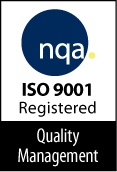Coding in MedDRA is fraught with pitfalls and conceptual shades of grey. How and why we find a code that will represent the event presented best requires some coding practice predetermination in some cases that would otherwise become a challenge. Here are a few examples of how early decision making can minimize your efforts in determining how to code a specific types of term.
Cascade or Indirect AEs
When we have a term with more than one issue going on at the same time, dozens of MedDRA codes could be used for a patient’s conditions. As we know, the main goal of MedDRA is to provide the main terms that describe the case. It is usually the practice to code direct AEs and not “indirect” AEs. For example, if a drug is suspected of causing a patient to become dizzy and then fall and fractures her hip, the direct AE is the dizziness and the indirect or secondary AEs are the fall and hip fracture. Many people here would only code the dizziness arguing that the drug really did not cause a bone fracture directly.
How Many Codes?
Many companies limit the number of codes to under 6 or so for AEs/SAES in each case. The purpose of coding in MedDRA is to understand the major issues and not get lost in the lesser issues or secondary issues. Usually the Goldilocks Principle should be used: “not too hot, not too cold but just right”. That is, not too many codes, not too few but the appropriate number for the case. This requires medical and clinical judgment as well as years of experience in the pharmaceutical industry coding.
Lumping vs Splitting
In general the goal of coding is to capture the essence of the case and to use diagnoses or syndromes when possible. For example, it is usually preferable to use “flu-like syndrome” as the single code rather than coding fever, malaise, fatigue, muscle aches, headache, chills, runny nose etc. In that sense “lumping” – using a single term diagnosis or syndrome is often better than “splitting”.
Pharmaceutical industry coding need not be a riddle wrapped in a mystery inside an enigma. With good decision making and process guidelines coding can become an evenly flowing process navigated by experts with the utmost of confidence.

